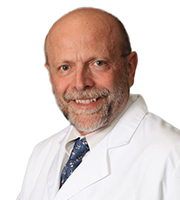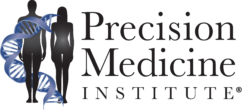Walking the fine line between not being the biggest risk taker and not being the last adopter, hospitals that offer genetic testing can expect their market share to increase and their payer mix to improve, according to LSUHSC’s Miele
In the 1980s, when Lucio Miele, MD, PhD, was completing his fellowship in human genetics at the National Institutes of Health (NIH), colleagues at the radiology branch of the NIH were just beginning to dabble with magnetic resonance imaging (MRI), an unfamiliar and little-understood testing modality for most practicing physicians at the time.
“Your average physician back then knew X-ray film. They had no idea what MRI can and cannot do for the patient, let alone how the machine worked,” says Miele, who is now Professor and Chair of the Department of Genetics at Louisiana State University Health Sciences Center. “Over a generation, physicians are now familiar with the fact that there are certain situations in which MRI is more informative than CT or X-ray. It’s part of the medical culture. Precision medicine is not—yet.”
According to Miele, before precision medicine can truly make its way into the clinical mainstream, the industry must take the following steps:
1. Educate Community Clinicians
According to focus group research of underserved patients and clinicians throughout Louisiana, conducted by Drs. Terry Davis, Connie Arnold, and Glenn Mills of LSUHSC Feist-Weiller Cancer Center in Shreveport in collaboration with Miele, patients are quite interested in precision medicine and would like to have more access to it. “But they don’t want to hear about it from advertisements or big corporations,” he says. “They want to hear it from their trusted local physicians.” This work is in press in Frontiers in Molecular Medicine.
The trouble is that the physicians, who are overworked and under-resourced themselves, don’t know much more about precision medicine than primary care physicians did 30 years ago.
“What they said is that they need material that is clear and recent, culturally sensitive, and lay friendly, which they can share with their patients to explain realistically what we can and cannot get out of precision medicine today.”
In other words, the industry needs to utilize scientific writers to translate the data that genetic researchers have thus far collected into clear guidance about what clinicians can do with it for their patients.

Lucio Miele, MD, PhD (above), is the head of the 17-faculty Genetics Department at LSUHSC. He oversees the newly created Precision Medicine Program and Bioinformatics and Genomics Research Program. During the Precision Medicine Institute Symposium 2019 in New Orleans, Miele will share how LSU aligned resources, worked with physicians, and secured reimbursement, in order to expand into precision medicine. (Photo copyright: LSUHSC)
2. Enhance Medical School Training
Similarly, tomorrow’s physicians must be well-versed in the cutting-edge technology of today, Miele says, adding that teaching hospitals have a special obligation to prepare their trainees. “Today, any pathology or genetics program that doesn’t have a precision medicine/next generation sequencing operation is not going to be providing their trainees with what they need to know.”
And this exposure should start in medical school, he says. “The quality of the doctors you train will depend on how advanced their education is.” At LSUHSC, for example, genetics curriculum has been mandatory for medical students for the past two years. “It’s mandatory that they study this stuff because they’re going to have to be equipped to use it in the future after we’re all retired,” Miele says.
3. Select the Right Specialties
For individual hospitals, precision medicine offerings represent an undeniable competitive advantage in some high-risk specialties such as oncology. “When somebody hears the big ‘C’ word, they really want to go to the best possible place,” he says. “You don’t want to be left behind and be the hospital where people go if they have a broken leg but won’t if they have cancer. You do have to market yourself as a high-tech operation.”
That said, it’s not practical or advised to attempt to be on the cutting edge with all specialties, Miele warns. With reimbursement for many emerging tests still uncertain at best, it’s important for hospitals to be mindful of the return on their investment.
“No hospital can be stuck with that kind of bill and eat the cost, even if it gives them a competitive advantage,” he says. But as the costs of tests come down, hospitals that offer them can expect their market share to increase and their payer mix to improve, he adds.
“Don’t put the cart ahead of the horse. However, that doesn’t mean be the last one to adopt, because you will be at a disadvantage, especially in certain specialties such as oncology,” Miele says. “You have to walk a fine line between not being the biggest risk taker and not being the last adopter,” he says, “because it’s coming. There’s no turning the clock back.”
—Debra A. Shute
Related Information:
More about Lucio Miele, MD, PhD
